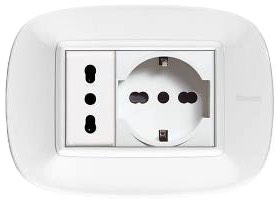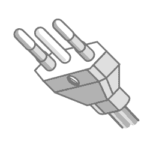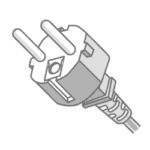Italian Electricity & Electrical Outlets

Adapters are easy to find at the airport but they will most likely be extremely overpriced, so our suggestion is to buy them beforehand.
Converters are normally more expensive than adaptors because they also convert the voltage from 220V to 110V, however they are worth the investment since they can save that professional curling iron or hairdryer you love to use!
Plugs in Italy
This information is additional in case you are interested in understanding the different types of plugs used in Europe. There are three main types of plugs in Italy: bipolar, tripolar and “Schuko”.



Bipolar plug
Is characterized by two pins: neutral and phase. It is normally used for appliances that have double insulation and therefore do not need the earth pole.
Tripolar plug
Is characterized by three pins: neutral, phase and earth (middle pin). It is the most common and widespread type of plug in Italy.
“Schuko” plug
Also called German, it is available both in the bipolar and tripolar version. The earth pin, if any, is usually replaced by two lateral metal blades. The pins are usually thicker than those in the bipolar or tripolar plugs and might not fit in older outlets, requiring an adaptor themselves. These type of plugs are generally used for demanding appliances such as refrigerators, washing machines or irons.
